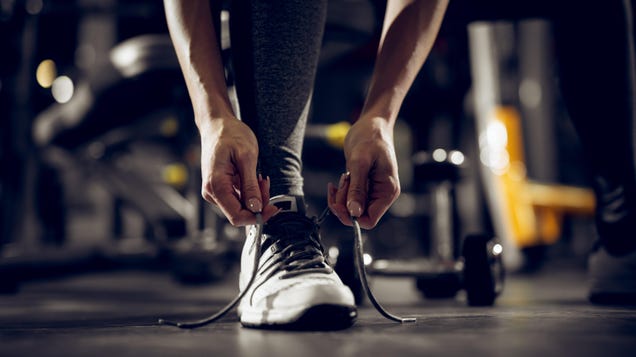
One of the most frustrating hobbies I ever took up was archery, but not because it’s hard to hit a target on the wall (it is, but I got pretty good at that). My problem was that one of the popular ways to go out and have fun with archery was to do “3D shoots,” where you would have to shoot at a series of statues of animals, each positioned at an unknown distance.
Estimating distance turned out to be my downfall. If you don’t have a good sense of how far away the fake deer is, you’ll end up shooting way over its back or burying your arrow under the ground beneath its feet. At the time, I assumed that estimating distance was less a learnable skill and more a gut feeling. Hence my surprise when I recently came across a quick eyeball-and-mental-math trick that allows anyone to estimate distance pretty accurately.
How the thumb trick turns a hard problem into an easy one
The technique involves some gut-level estimation, but a much easier type. You just have to guess—or know—the size of an object in the distance. (If you find yourself estimating distances often, you may want to look up the typical sizes of objects like cars. We’ll use a car in our example below.)
You just need that guess, your thumb, and the ability to multiply by 10. Here’s how it works:
Hold your thumb in front of you (with your arm fully outstretched), and close one eye. Line up your thumb with an object whose size you have some sense of (for example, a car).
Without moving your thumb, close your open eye, and open the other one. Your thumb will appear to be in a different place.
Estimate how far your thumb “moved” relative to the object you’re looking at. For example, a car is about 15 feet long, so if your thumb moved half a car length, that’s about 7.5 feet.
Multiply by 10. In this example, you’d calculate that the car is about 75 feet away from you.
I tested this trick (it works)
Too good to be true? I walked around and tried it out. I also carried a laser distance-finder and a tape measure with me to verify. One thing I noticed right away is that I was tempted to measure the space in between my two thumb images; instead, you need to measure from, say, the left side of the first thumb image to the left side of the second thumb image.
Standing in the kitchen, eyeballing the TV in the other room, I figured the TV was somewhere between 3 and 4 feet wide, and that my thumb moved a little more than half its distance, so about 2 feet. Calculation: TV must be 20 feet away. Laser level says: 25 feet. OK, not bad.
From my desk to a nearby bookshelf, my thumb moved 6 inches, maybe a little more. Calculation: 60ish inches. Actual measurement: 59 inches.
From a spot in my driveway to a garden shed: I turned my head sideways to measure against the height of the door. Thumb distance should be about 6 feet (most of the height of the door), thus the shed must be 60 feet away. Actual measurement: around 70 feet. Not perfect, but once again, not too far off.
The reason this trick is supposed to work is that the distance from your eye to your thumb is about 10 times the distance from one eye to the other. I measured this, too. Looking into the mirror with a measuring tape in front of my face, my pupils are 2 and 5/16″ apart, or 2.3 inches. The distance from the spot between my eyebrows to my outstretched thumb is 23.5 inches. That’s a factor of 10.2, impressively close to the 10 I was promised.
Bottom line: This trick isn’t going to give you a precise distance, but as a tool for estimating, it actually kind of works! And by the way, if you ever need to estimate how far away a deer-shaped statue is: a deer’s body length is roughly 5 feet.








